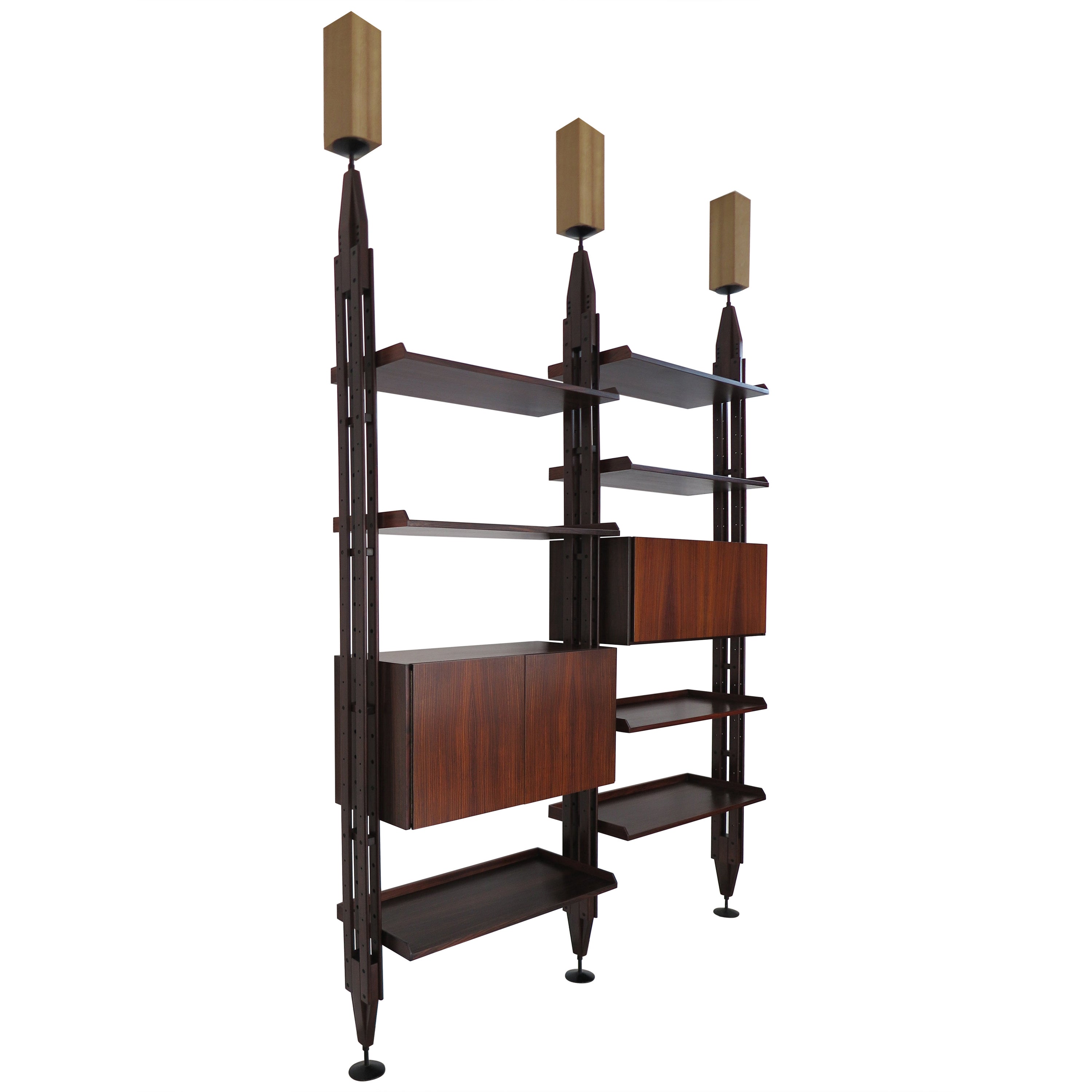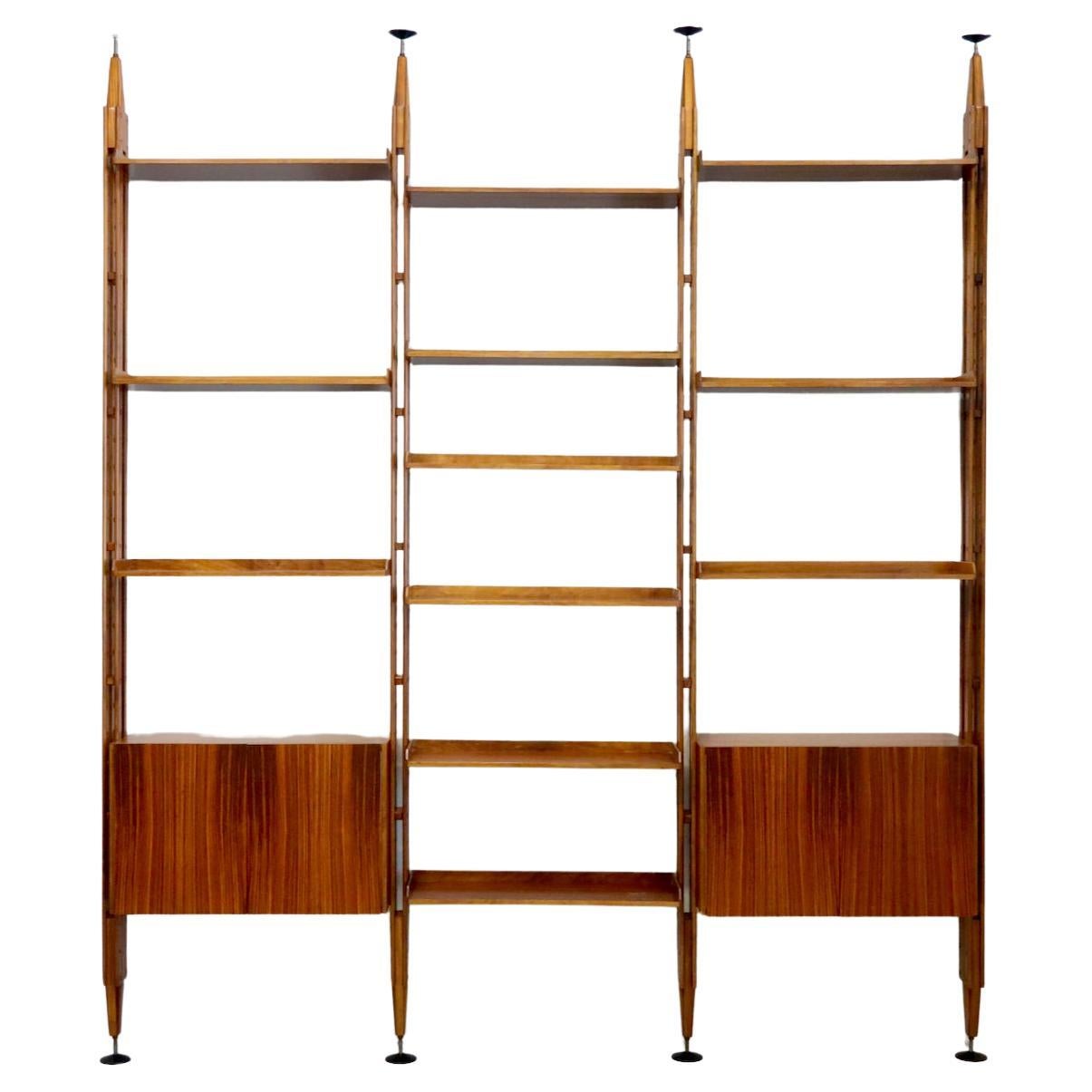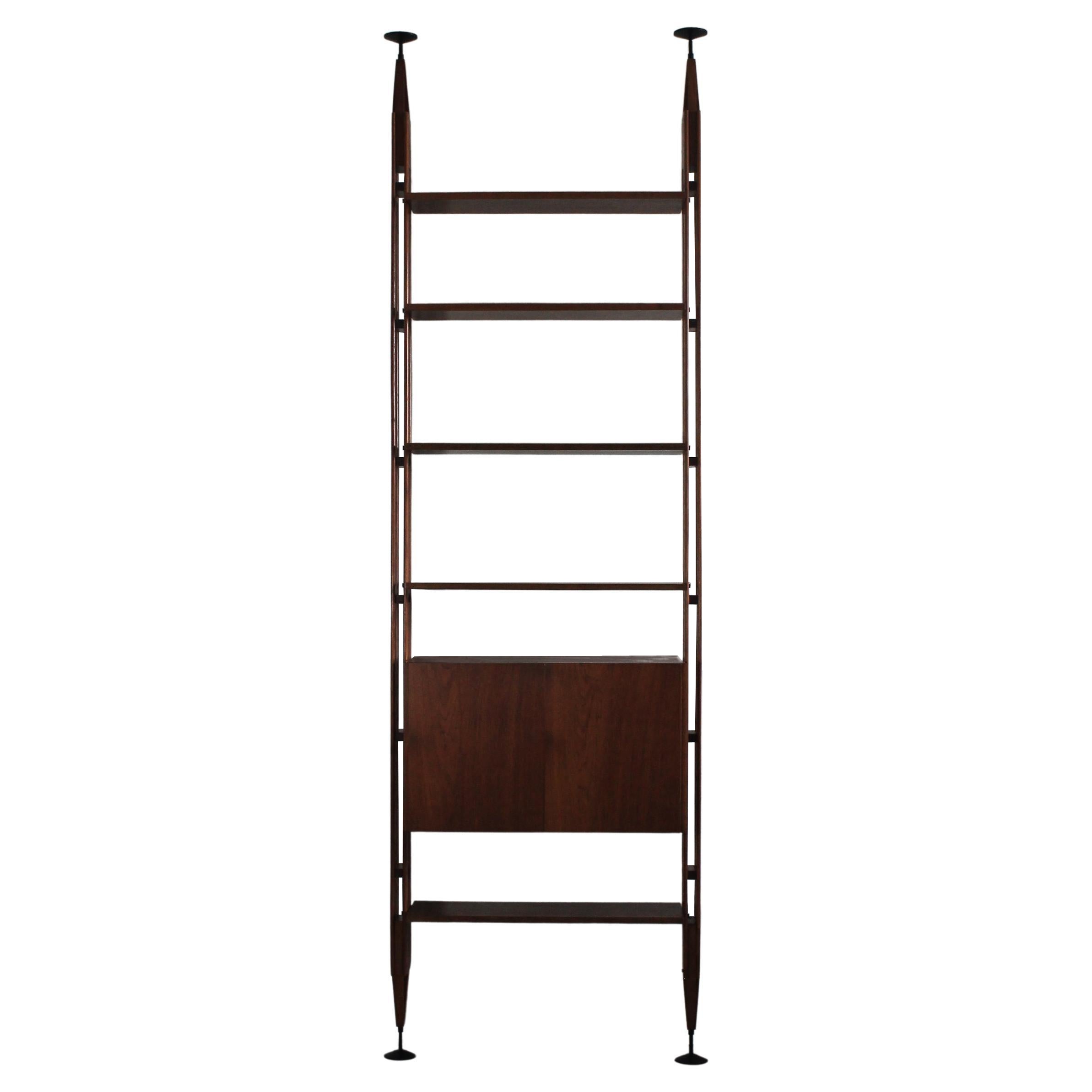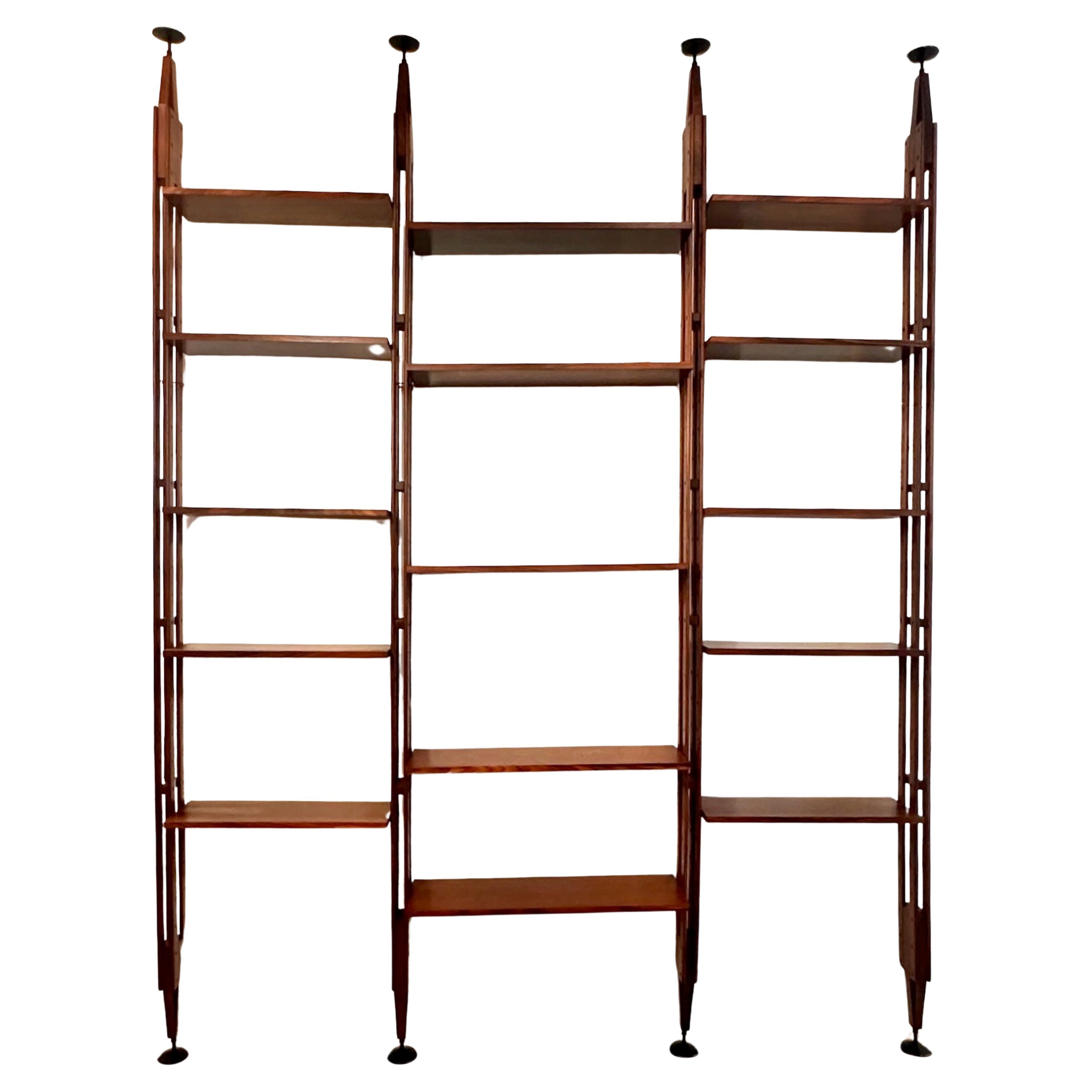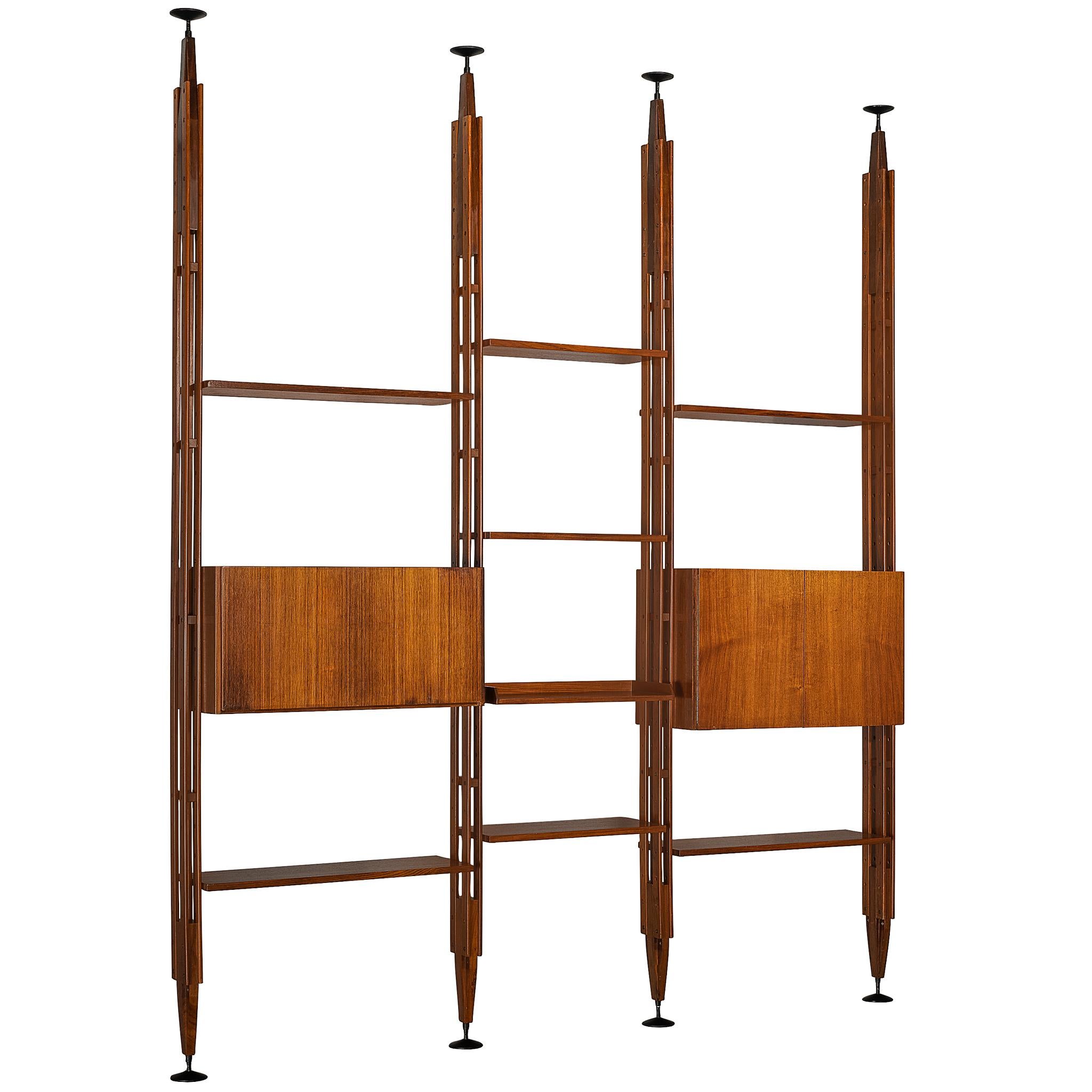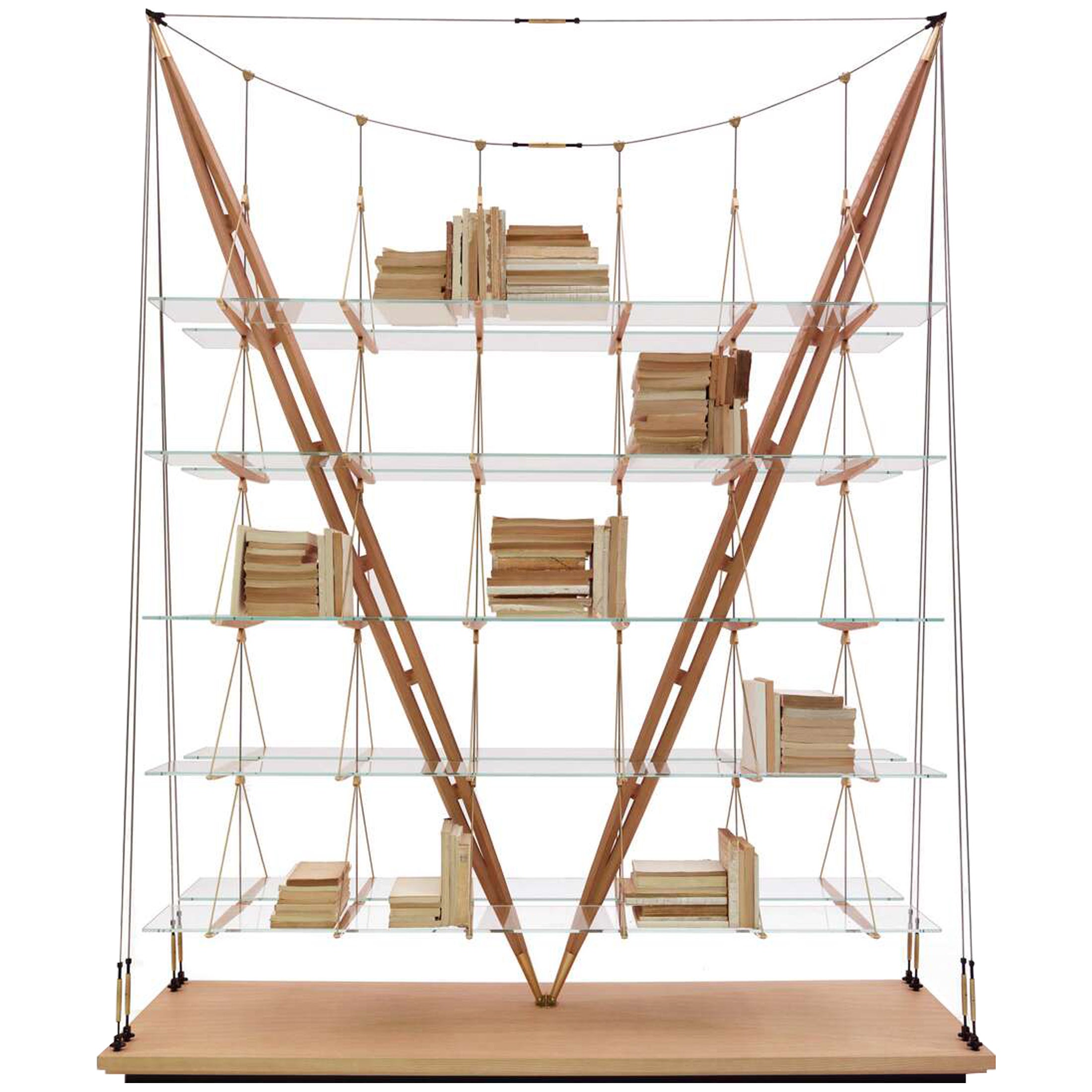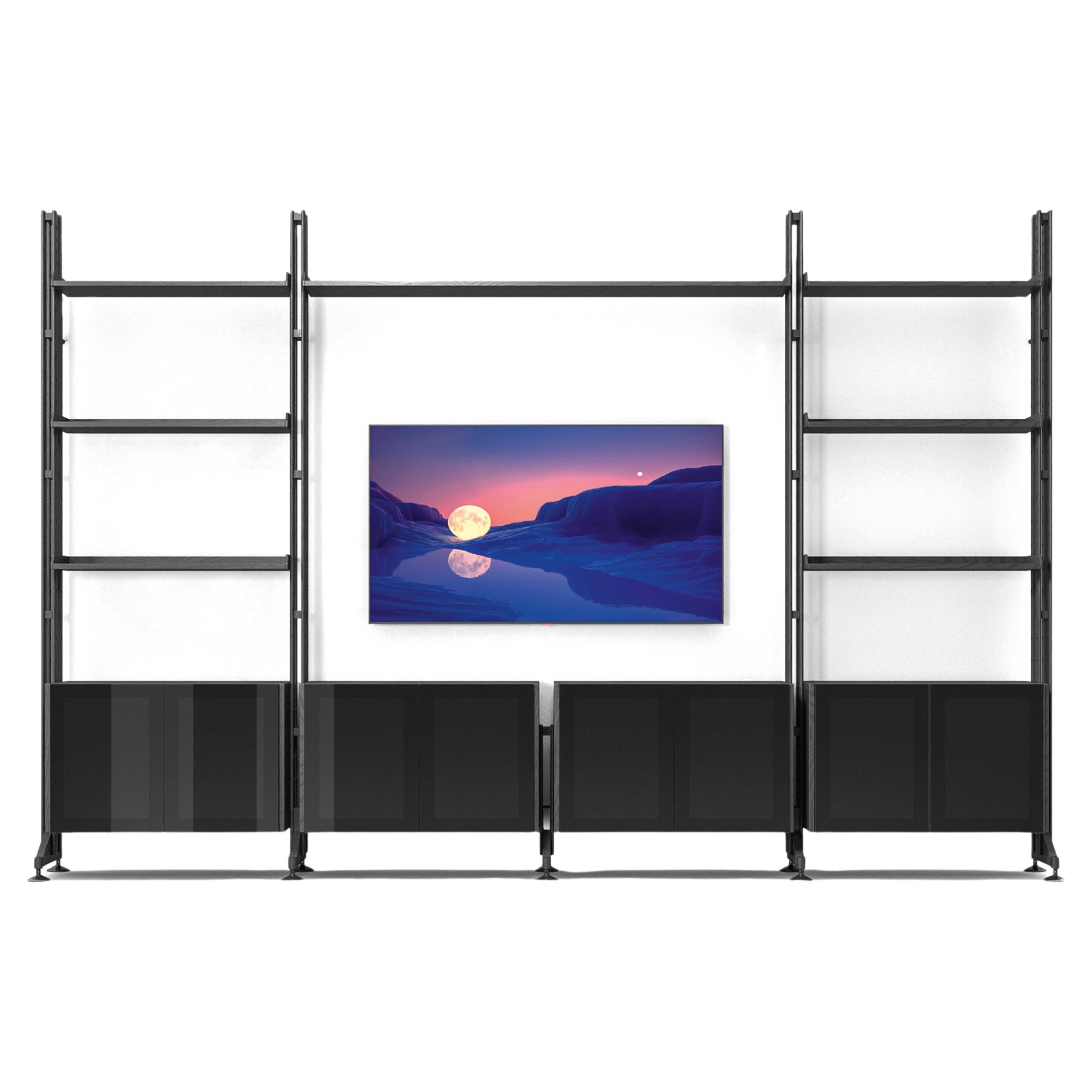
Franco Albini Midcentury Bookcase Wood LB7 Designed for Poggi in 1957, Italia
View Similar Items
Franco Albini Midcentury Bookcase Wood LB7 Designed for Poggi in 1957, Italia
About the Item
- Creator:Amando Poggi (Manufacturer),Franco Albini (Designer)
- Dimensions:Height: 108.27 in (275 cm)Width: 68.9 in (175 cm)Depth: 15.75 in (40 cm)
- Style:Mid-Century Modern (Of the Period)
- Materials and Techniques:
- Place of Origin:
- Period:
- Date of Manufacture:1957
- Condition:Wear consistent with age and use.
- Seller Location:Milano, IT
- Reference Number:1stDibs: LU1689213934132
Franco Albini
While working under the polymath Gio Ponti — arguably the most important figure in 20th-century Italian modernism — furniture designer Franco Albini nurtured a love for modern forms combined with traditional craft techniques.
Albini is widely known for working with organic materials such as rattan and cane for his chairs and other seating, but he also played a pivotal role in the Italian rationalist movement of the early 20th century, which saw architects and furniture makers applying a strict emphasis on geometry in their work. Rationalists drew on Ancient Roman architecture but rejected ornament, much in the way that Le Corbusier and celebrated Bauhaus figures such as Ludwig Mies van der Rohe had in their modernist furniture.
Albini received his degree in architecture from the Polytechnic University of Milan in 1929, and, in 1931, he founded his practice in Milan, where he tackled workers’ housing and other reconstruction projects. A gifted urban planner, he also developed the Palazzo Bianco, Palazzo Rosso and Tesoro di San Lorenzo museums in Genoa. While Albini is revered for his Margherita chair — a Triennale Milano award winner created for Bonacina in 1951 — he also collaborated with manufacturers Poggi and Cassina in the 1940s on seating, tables and more that embodied his artistic vision. Of that mid-century work, the one piece that perhaps best captures this vision is the iconic Luisa chair.
With its cherry red upholstery and sinuous wooden legs that seem to float aboveground, the Luisa is a genuine masterpiece. It is also a testament to Albini’s perfectionism, as it endured several prototypes — including one made by Knoll in the late 1940s — and took approximately 15 years to design. Poggi launched the final version of the armchair in 1955, earning Albini the prestigious Compasso d’Oro from Italy’s Association for Industrial Design. It is produced today by Cassina. Albini named the chair for someone who likely saw the process firsthand: his personal secretary of two decades, Luisa Colombini.
Find vintage Franco Albini furniture on 1stDibs.
- Franco Albini Italian Midcentury Dark Wood Bookcase Lb7 for Poggi, 1950sBy Franco Albini, PoggiLocated in Reggio Emilia, ITItalian dark wood shelves bookcase with floor and ceiling uprights, designed by Franco Albini in 1956 for Poggi Pavia, shelves and container with wood veneer adjustable in height and...Category
Vintage 1950s Italian Mid-Century Modern Bookcases
MaterialsMetal
- "Lb7" Bookcase by Franco Albini for Poggi MarkedBy Poggi, Franco AlbiniLocated in Rovereta, SMlibrary, Franco Ablini for Poggi, Italy, 1950. Elegant Franco Albini library or room divider. Shelves and units can be adjusted or put in different positions. The feet are in lacque...Category
Mid-20th Century Italian Mid-Century Modern Bookcases
MaterialsWood
- Franco Albini Rosewood Mid-Century Modern “LB7” Modular Bookcase for Poggi, 1957By Franco Albini, PoggiLocated in Vicenza, ITLB7 bookcase, designed by Franco Albini and manufactured by Poggi in 1957. Modular bookstore composed by upholds, containers with flying and doors, shelve. The industrial standard for every product component allows permanent and different solutions, from the bearing structures to the elements. The structure does not need anchorages to the wall and can be placed in the middle of the space. This set is composed of 3 modules, ten shelves, and three containers. It is made of Rosewood, iron, and brass. Excellent vintage condition. Franco Albini was born in Robbiate in 1905, and after his childhood and part of his youth, he moved to Milan. He graduated at Politecnico of Milan, Faculty of Architecture, in 1929, and He collaborated for three years in Giò Ponti and Emilio Lancia’s office. He probably had his international contacts here, at The International Exposition of 1929 in Barcelona and Paris, where he visited le Corbusier’s office, as Franca Helg used to tell. Throughout these first three years, his works were undoubtedly related to XIXth Century. His meeting with Edoardo Persico marks an evident turnover towards rationalism and writers for “Casabella” magazine. Persico’s thoughtful and ironical comments on some of Albini’s drawings for office furniture caused him deep upsetting. “I spent days of real anxiety – tells Albini – I had to answer all questions. I had a long fever”. The new phase that the meeting provoked begins with opening his own first office at Via Panizza with Renato Camus and Giancarlo Palanti. The group of Architects starts taking care of social housing, participating in the competition for the Baracca neighborhood in 1932, and then realizing the Ifacp neighborhood: Fabio Filzi (1936/38), Gabriele D’Annunzio, and Ettore Ponti (1939). During those years, He also worked for his first private villa (Pestarini). It is mainly in the context of exhibitions that the Italian architect experiments the compromise between rigor and poetic fantasy that Pagano was talking about; He conceived all the elements that would become recurrent in all types of his work – Architecture, Interiors, Design. The 1933 opening of the new Triennale of Milano, in Palazzo dell’Arte, becomes an occasion to express the highly innovative character of rationalist thinking. In this place, to experiment with new materials and solutions, but most of all a “method”. Young rationalist architects cultivated the art of exhibiting as a communication lab, an open field to space solutions. Albini, with Giancarlo Palanti, sets the steel structure house (with R. Camus, G. Mazzoleni, G. Minoletti and coordination by G. Pagano) designing also its furniture. For the next Triennale in 1936, marked by Persico’s early death, Franco Albini, together with a group of young architects around Pagano, takes care of the exhibition of Dwelling, where he presented 3 types of lodgings. In the same year, Albini and Romano design the exhibition for Ancient Italian jewelry: vertical uprights, simple linear poles design space. This element is recurring in other works, like the Scipione exhibition (1941), Vanzetti stand (1942), and Olivetti shop in Paris (1956). The architectural space is readable through a grid, introducing a third dimension, the vertical one, with a sense of lightness and transparency. Upright is also used in design objects, such as the Veliero bookcase...Category
Vintage 1950s Italian Mid-Century Modern Shelves
MaterialsBrass, Iron
- Franco Albini Walnut Bookcase LB7 for Poggi Pavia, 1956By Franco Albini, PoggiLocated in Madrid, ESA two modular teak bookcase, Designed by Franco Albini and edited in 1956 by Poggi, Pavia, Marked. Composed of two modules with storages units an...Category
Vintage 1950s Italian Mid-Century Modern Bookcases
MaterialsMetal
- Franco Albini LB7 Bookcase in Teak Wood by Poggi Pavia 1950s ItalyBy Franco Albini, PoggiLocated in Montecatini Terme, ITLB7 bookcase composed of a single module with shelves and a storage unit with two doors, made in veneered solid teak wood, and black lacquered metal details. Designed by Franco Alb...Category
Vintage 1950s Italian Mid-Century Modern Bookcases
MaterialsMetal
- Mid-Century Modern LB7 Bookcase by Franco Albini for Poggi . 1950sBy Franco Albini, PoggiLocated in Madrid, ESA three modular bookcase designed by Fanco Albini and edited by Poggi in the 50s.It is composed of three modules and 15 shelves.The central module measures 90 cm length and the two l...Category
Vintage 1950s Italian Mid-Century Modern Bookcases
MaterialsMetal
